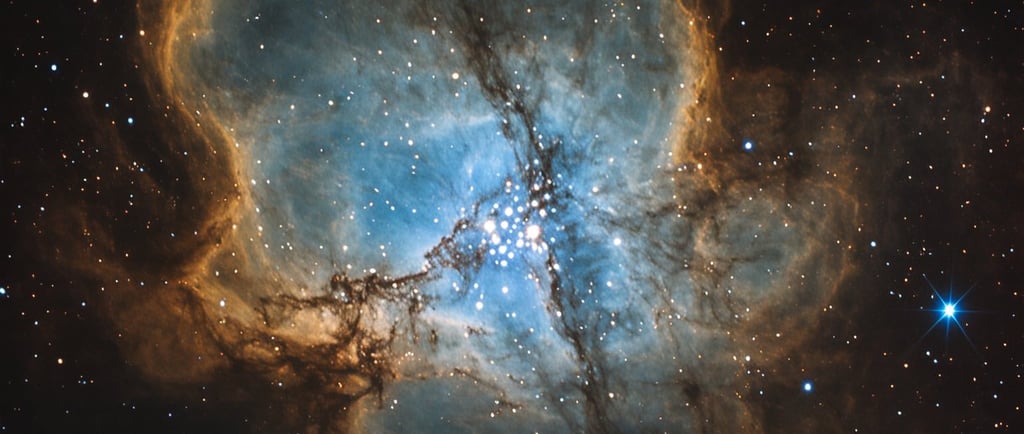NGC 7023: The Iris Nebula


Introduction to NGC 7023
NGC 7023, commonly known as the Iris Nebula, is a captivating reflection nebula located in the constellation Cepheus. Nestled within the abundant star fields, this celestial wonder offers a stunning view for amateur and professional astronomers alike. At an incredible distance of approximately 1,400 light years from Earth, NGC 7023 presents fascinating details that enhance our understanding of the cosmos.
The Features of the Iris Nebula
The most striking aspect of NGC 7023 is its beautiful coloration, which is primarily due to the scattered light from its central star. This starlight interacts with the surrounding gas and dust, creating a mesmerizing play of blues and whites that can only be seen through telescopes equipped with the right filters. The glowing gaseous petals of the nebula stretch roughly six light years across, forming an intricate and delicate structure that captivates the imagination.
The Significance of NGC 7023 in Astronomy
As a reflection nebula, NGC 7023 plays a significant role in the study of star formation and the interstellar medium. The nebula contains both young stars and dense areas of dust, which are crucial for understanding how new stars are born. Researchers believe that the knowledge gained from studying NGC 7023 can shed light on the environmental conditions that lead to star formation in various regions of the universe.
In addition to its scientific importance, NGC 7023 is a popular target for astrophotographers due to its striking appearance. Observing the nebula not only provides valuable data for scientific study but also offers an opportunity to appreciate the aesthetic nature of the universe. As astronomy continues to evolve, the charm and intrigue of NGC 7023 will undoubtedly maintain its appeal for generations to come.
